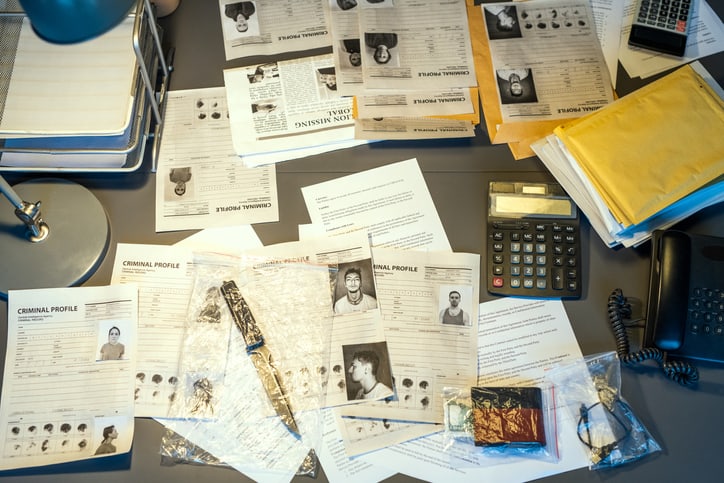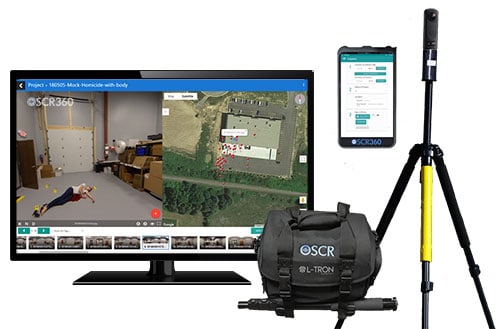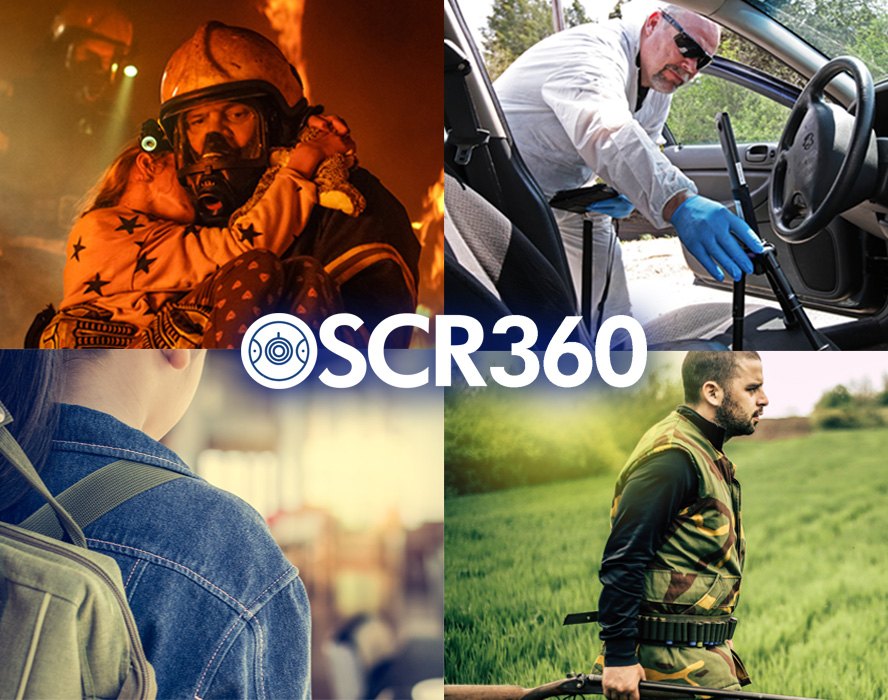See how OSCR360 Aided in a 38-Year Cold Case Investigation, Indictment and Arrest.
The Krauseneck Case Overview
On February 19, 1982, a suburban community in Western New York was rocked with the news of a horrifying murder. A 29-year-old woman had been killed with an ax to the head as she lay asleep in bed. The victim’s three-year-old daughter was sleeping in the next room at the time and was left alone with her mother’s body all day until her father returned home from work that evening.
Local law enforcement officers responded to a 911 call from the neighbor’s house around 5:00 PM, where the victim’s husband and daughter had gone to report the murder and possible burglary.
In the hours, days, and weeks that followed, police investigators examined every angle, painstakingly collected and preserved evidence, interviewed potential witnesses, and thoroughly documented case details. However, the weeks led into months, the months led into years, and the years led into decades with no concrete answers to be found.
The case was never closed, and the unsolved mystery remained on the minds of local investigators. From time to time, the police department would receive new tips and leads from community members. At one point, a serial killer even admitted to the crime, though his story didn’t align with the evidence, and his confession was unfounded.
Finally, thirty-seven years later in November of 2019, an arrest was made. New evidence was brought to light, and the victim’s husband, James Krauseneck Jr. was indicted by a grand jury on the charge of Murder in the Second Degree. After surrendering his passport, Krauseneck was released on $100,000 bail. Due to the global Covid-19 pandemic, Krauseneck’s trial was delayed until summer of 2022.
New Technology, New Resources
In 2019, the FBI/National Institute of Justice launched a “Cold Case Working Group” outlining best practices for local and state agencies to investigate unsolved crimes. Along with local law enforcement, officers from across the country, and the local District Attorney’s office, it was time to take a fresh look at the notorious ax murder of 1982.
As over 30 years had passed since the victim was killed, new forensic technology had inevitably emerged. FBI investigators were able to digitize and organize all of the evidence collected in 1982 into a searchable format for easy access. In addition, the development of technology, like OSCR360, provided a systematic and compelling way to organize, present and review all of the evidence.

OSCR360 for Cold Case Investigation
OSCR360 can be used for several purposes throughout cold case investigation.

Virtual Walkthrough of the Scene for Investigators.
Even though OSCR360 spherical photography software hadn’t been developed in the 1980s, it was available and ready to use in 2018 when the Krauseneck home where the ax murder occurred was listed for sale. Investigators were granted permission to access the home and document the rooms, which had predominantly remained unchanged.
By documenting the layout of a house, investigators are able to build a virtual walkthrough of the home. The OSCR photos capture the flow of the environment in 360-degrees, floor to ceiling, for a life-like vantage point. Later, all digitized evidence can be added to the walkthrough, providing context to where evidence was found. This proves invaluable as investigators repeatedly walked through the scene virtually and piece together each clue in the cold case puzzle.
Mapping and Sketch Overlays.
Whenever OSCR captures crime scene photos, the photos are automatically stamped with GPS coordinates. In the Krauseneck case, the home’s address could be saved within the presentation, and the original sketches of the crime scene can be overlaid to correlate with the house layout. For any cold case investigation, blueprints can also be overlaid within the OSCR software to provide additional context or to notate different floors/levels in a building.
Document Preservation and Storage.
An antiquated cold case means antiquated documents. Every time a new detective is assigned to a case, or anytime new case details emerge (prior to OSCR), boxes of documents needed to be pulled out and sifted through. As a result of natural wear and tear, many documents can start to degrade. Digitization not only ensures the preservation of each piece of evidence and documentation, but also allows the information to be easily searchable. No longer do detectives need to pick through stacks of paper to find what they are looking for.
Evidence Organization and Presentation.
OSCR360 compiles all of the pertinent digital case information into a presentation-style format. Each piece of digital evidence is connected to the precise location where the evidence was found in the crime scene’s layout. Investigators can then create points of interest or “POIs” within the OSCR software to highlight documents, photos, interview notes, videos, audio from a 911 phone call, and more.
Timeline Organization
The OSCR presentation software organizes information not only by location, but also in a cohesive timeline to allow viewers to review the case from start to finish. After the OSCR file is created, investigators can easily click, drag, and rearrange aspects of the OSCR project as new tips are received and new facts are uncovered.
Virtual Walkthrough of the Scene for Witnesses and Third Parties
Third party contributors, such as forensic experts and other individuals called in to assist on various parts of a case, can be quickly brought up to speed using OSCR’s virtual walkthrough feature. Not only does this save time, but it can provide clarity and context to the scene.
OSCR has been successfully used in the courtroom for numerous trials and in trial preparation. A virtual OSCR walkthrough serves as a powerful tool when jogging the recollection of witnesses, suspects, and investigators. In the courtroom, prosecutors can show the jury exactly what happened and give further context to the crime scene.
“OSCR360 was influential in a recent homicide trial because it allowed me to take the Jury to the scene, virtually. OSCR helped me to answer Jurors’ questions and support investigator testimony by explaining details of the case in complete 360-detail. You could tell the jurors instantly ‘got it’. The software was easy to use, to navigate, and to use to admit the photographs [to evidence] as a fair and accurate representation of the scene. It was great and I look forward to using it again!”
– Cattaraugus County District Attorney’s Office
More About OSCR & L-Tron
OSCR360 was created by L-Tron in close collaboration with law enforcement and district attorneys. Unlike traditional courtroom presentation software, OSCR takes the courtroom audience on a virtual tour of the crime scene, allowing the jury to walk in the footsteps of a crime scene investigator and experience the scene firsthand. OSCR is fast and easy to use, with little to no training required. New features are added and updated as a direct result of feedback from investigators and prosecutors.

L-Tron has partnered with Public Safety for over two decades and our technology is deployed in thousands of municipalities across all 50 states.